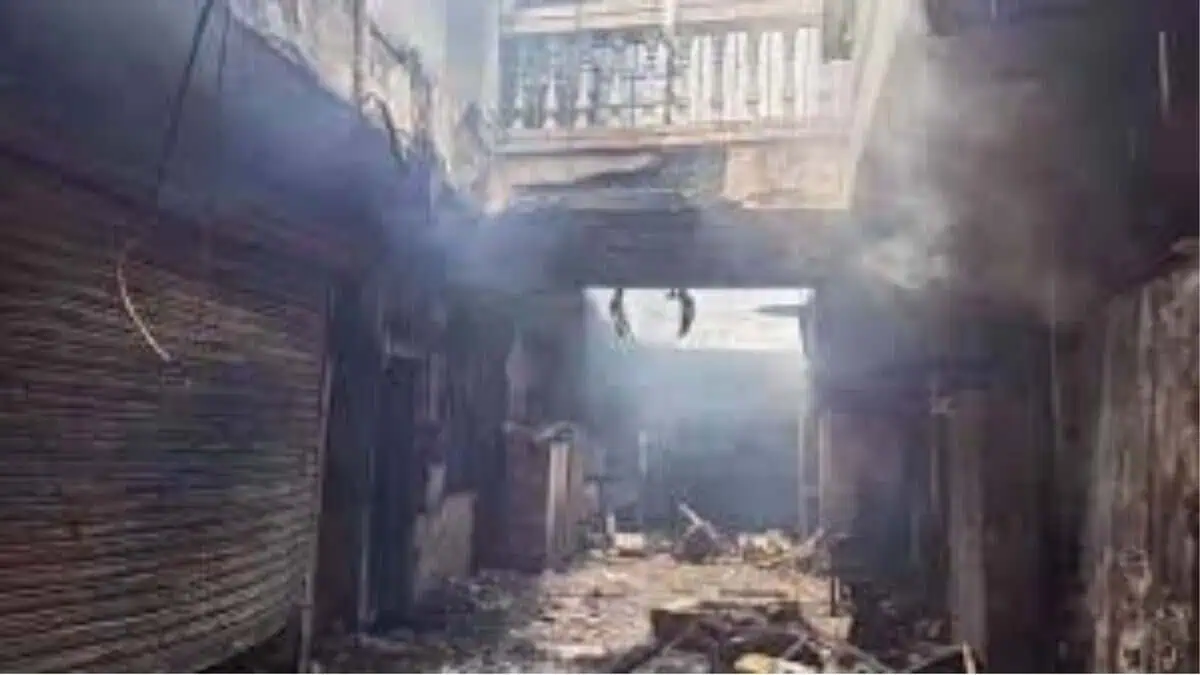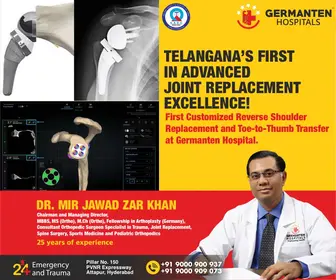
Hyderabad: The Gulzar Houz fire accident, which claimed 17 lives last week, may have been caused due to lack of proper earthing in the building where the incident took place.
Senior officials said that many building owners in the city do not focus on proper earthing while installing the Uninterrupted Power Supply (UPS) system or ACs in both old and new buildings.
On Tuesday, May 20, the clues and forensic team inspected the building where they reportedly came to a preliminary understanding that the compressors in the air-conditioners (ACs) exploded, causing the fire accident.
As per reports, there were 14 air conditioners installed inside the old G+2 building, having 8 rooms (excluding the jewellery shops located on the ground floor). Some reports stated that there were 8 ACs inside the house.
According to the Chief Electrical Inspector to the Telangana government, T Kantha Rao, such incidents can happen due to the ageing of the electricity cables.
“There is also a chance for heat to be generated if any electric/electronic appliance is continuously used for 8 hours. Having an alternative appliance which could be used as a stand-by,” stated and cautioned that the wiring for those appliances should be run from the main.
He also stresses the need for installing a Residual Current Circuit Breaker (RCCB) that detects and cuts off power when there’s a current imbalance, indicating a potential leak or fault. It helps prevent electrocution and fires.
Though it is too early to arrive at any conclusion or point fingers at individuals or departments, like the Hyderabad Disaster Response Assets Monitoring and Protection Agency (HYDRAA) commissioner AV Ranganath stated on Monday, the Gulzar Houz incident has to be a lesson to prevent such incidents in the future.
Gulzar Houz Fire department incident
Ch Chakrapani, chief engineer, metro zone, Telangana Southern Power Distribution Corporation Limited (TGSPDCL), stated that his department received a call about the fire accident at around 7.15 am on Sunday, May 18, and the electricity supply was immediately shut down in that area.
He told Siasat.com that there was no short-circuit externally, as there was no issue found either with the transformer or with the main external electrical supply system, even while the fire was raging in that house.
He noted that no other house in that area had any electricity problem, which meant something had happened in the internal electrical system in that house where the fire accident took place.
As per experts in electrical safety, there could have been several reasons for such a fire accident to happen.
“I was told that there were 8 ACs in the building. It needs to be checked whether the compressors were installed inside or outside, whether they were well ventilated or not. It also came to my notice that there was a gap of just one metre between the affected building and the adjacent building. If insulation is more, it could heat the cable and cause the inflammable gas inside the AC compressor to catch fire,” Kantha Rao told Siasat.com, while mentioning that his team would only inspect the site after the panchnama is done.
“As per the Indian Standards Institute norms, once in 15 years, the entire electrical wiring system should be replaced. But people are using it for 20 and 40 years,” he exclaims, also suggesting house owners to get their electrical system checked by TGSPDCL once in 5 years.
To bring awareness among the general public with regard to the usage of electricity and to bring down the electrical and fire accidents to zero level, the electricity inspectorate department has issued extensive electricity safety instructions to owners of houses and commercial establishments on Tuesday, May 20.
Electrical safety instructions
- All electrical work should be carried out by licensed electrical contractors under the supervision of permit holders with qualified wiremen.
- 30mA ELCB/RCCB for each lighting circuit and 100mA ELCB for the power circuit shall be provided.
- Electrical wiring and installations must comply with Central Electricity Authority (measures relating to safety and electric supply) Regulations, 2023, National Electrical Code of India 2023 (NEC
2023), National Building Code of India 2016 (NBC 2016), and other IS standards and IEC standards. - Use correct cable sizes (1.5 sq mm for light points, 2.5 sq mm for power points, 4 sq mm for AC units and higher sizes as per loads, fault current, voltage drop) to prevent overheating and electrical failures.
- Use voltage stabilisers in areas prone to fluctuations to maintain stable voltage levels and prevent insulation deterioration.
- Derate cables based on ambient conditions to ensure the conductor temperature does not exceed insulation material limits.
- Final sub-circuits should be limited to 10 points or 800W, whichever is less, to prevent overloading.
- Balance loads in three-phase systems to prevent overheating and neutral current rise.
- Provide harmonic filters wherever harmonics are present and maintain a high power factor.
- Avoid connecting multiple phases to a single switchboard to prevent arcs and short circuits.
- Install suitable isolation switches in accessible locations to allow complete supply disconnection during emergencies.
- IT system earthing must be used for critical loads in hospitals.
- Medical isolation transformers prevent electrical leakage and ensure patient safety.
- Insulation monitoring systems detect faults at an early stage, reducing risks.
- RCCBs and MCBs must be tested regularly for their functionality.
- Surge Protection Devices (SPDs) help prevent damage from transient voltage spikes.
- Keep the earth fault loop impedance low to ensure fast circuit breaker response.
- Avoid placing switchboards and sockets near flammable materials.
- Investigate electrical faults before resetting circuit breakers or replacing fuses.
- Ensure batteries are stored in well-ventilated rooms to prevent hydrogen gas buildup.
- Provide adequate working clearance around electrical equipment for safe operation.
- Prevent fires from wardrobe lighting: Interior designers often install wardrobe lighting, which can pose a fire risk.
- Consider the space factor in conduits to prevent overheating.
- Use fire-rated sealants for shafts in high-rise buildings to prevent vertical fire spread.
- Close cable or conduit entry holes with fire-rated sealant to prevent smoke and fire propagation.
- Implement lightning protection systems with air terminals, down conductors, and proper grounding.
- Always use correctly sized lugs for cables to maintain safe electrical connections.
- Enclose electrical equipment in IP-rated enclosures to protect against dust and moisture.
- Use ISI-marked electrical components to ensure compliance with Indian safety standards.
- Flexible electrical design for future loads.
- Provide suitable fire extinguishers such as CO2 or dry powder types for electrical fires.
- Never install switchboards in bathrooms to minimise electrocution risks.
- Avoid contact with live electrical equipment whenever possible.
- Use rubber chappals or gloves while operating electrical devices.
- Employ AI-based remote operation to minimise human exposure.
- Isolate shock victims safely using non-conductive tools (e.g., wooden sticks).
- Administer CPR if necessary, performing chest compressions and rescue breaths.
- Balconies must remain open to facilitate emergency evacuations.
- Install accessible isolation switches outside godowns for easy supply disconnection.
- Use only dry-type transformers in residential and commercial buildings.
- The rating of fuses, MCB, MCCB, etc., of all protection devices shall not be more than the load capacity.
- Phase, neutral, and earth wires must be of the same size in lighting and power circuits.
- The earthing system shall be regularly monitored.
- All the electrical installations shall be inspected periodically (LV Installations for every 5 years, MV Installations for every 3 years and HV Installations for every year).
- Electrical wires ageing 15 years and above shall be properly tested and shall be replaced with new electrical wires.
- Avoid overloading your 3-pin socket by adding multi-plug sockets.
- Avoid loose connections and replace the already damaged insulation cables/wires.
- Check the electric equipment/appliances for any abnormal sound/rise in temperature, stop the system and get the problem rectified.
- Do not keep open any electrical panel doors and contractor covers, separator etc.,
- Proper ventilation shall be provided for the transformers, generators, switch gear panels, electrical equipment etc.,
- All electrical maintenance works shall be carried out through a qualified electrical engineer/licensed electrical contractor only.
- Before releasing the supply, the supplier shall obtain the work commencement reрort (WR-I) and the work completion report (WR-II) from the licensed electrical contractor who has executed the work.
- Panel distribution boards shall be provided with automatic CO2/Nitric Casting in case of any fire in the panel.
- Fire retardant low-smoke, and low-halogen power cables shall be used in buildings of more than fifteen metres height as per relevant standards.
- Distribution of electricity to the floors shall be done using a bus bar trunking system in high-rise buildings.
- The electricity meter shall not be installed in the passage of the staircase.
- Halogen-free flame retardant power cables as per the relevant standards shall be used in airports, hospitals and hotels irrespective of the height.
On May 22, the Fire Department Director General revealed that the family of Prahlad Modi failed to adhere to fire safety norms and remained in the building after the fire broke out, resulting in the tragedy. Click here to read more.



